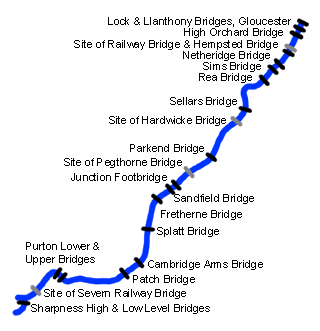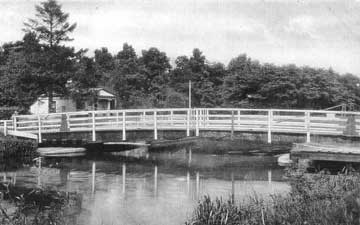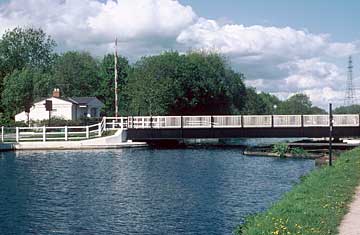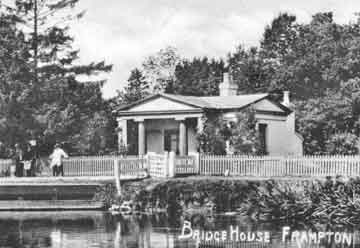Dimensions and Bridges The canal linking Gloucester and Sharpness docks is often said to be 16 miles long, 16ft deep and to have 16 bridges. In fact it was intended to be 18ft deep in the centre to accommodate the keels of large sailing ships, but it was not dredged to the full depth because in later years steamers had flatter bottoms and the under-water curvature of the bridge-holes became limiting. There were originally 16 bridges across the canal and one across Gloucester Lock. Four railway bridges were added later, two at Sharpness also being road bridges. Two road and two rail bridges have been removed, but new road bridges were added in 2007 and 2008, and so the total is currently 18 across the canal and one across Gloucester Lock.
|
|
Canal Bridges |
|
The original road bridges
(such as Fretherne Bridge above) comprised two wooden half-spans
which could be swung open to let vessels pass through. One half
was opened by a resident bridgeman and the other by a member of
the vessel's crew or a passman accompanying the vessel along the
towpath. (PC Glos Arch) |
The old wooden bridges
have all been replaced by single-span steel bridges operated by
one man. Most of these are opened by the bridgeman turning a handle,
but some (such as the new Fretherne Bridge above) are powered by
electric motors. Sadly, the graceful arch of the wooden bridge has
not been replicated. |
Bridgemen's
Houses |
|
|
|
The classical-style bridgemen's
houses were originally symmetrical in plan with gables on each elevation.
Each had a living room, one bedroom, a scullery at the back and
a porch with Doric columns at the front. (PC M Boakes) |
In later years, the houses
have been extended to provide more accommodation and modern facilities.
From the canal, however, Fretherne Bridge House has hardly changed,
as the alterations have been confined to the basement and the rear. |
Towpath |
|




